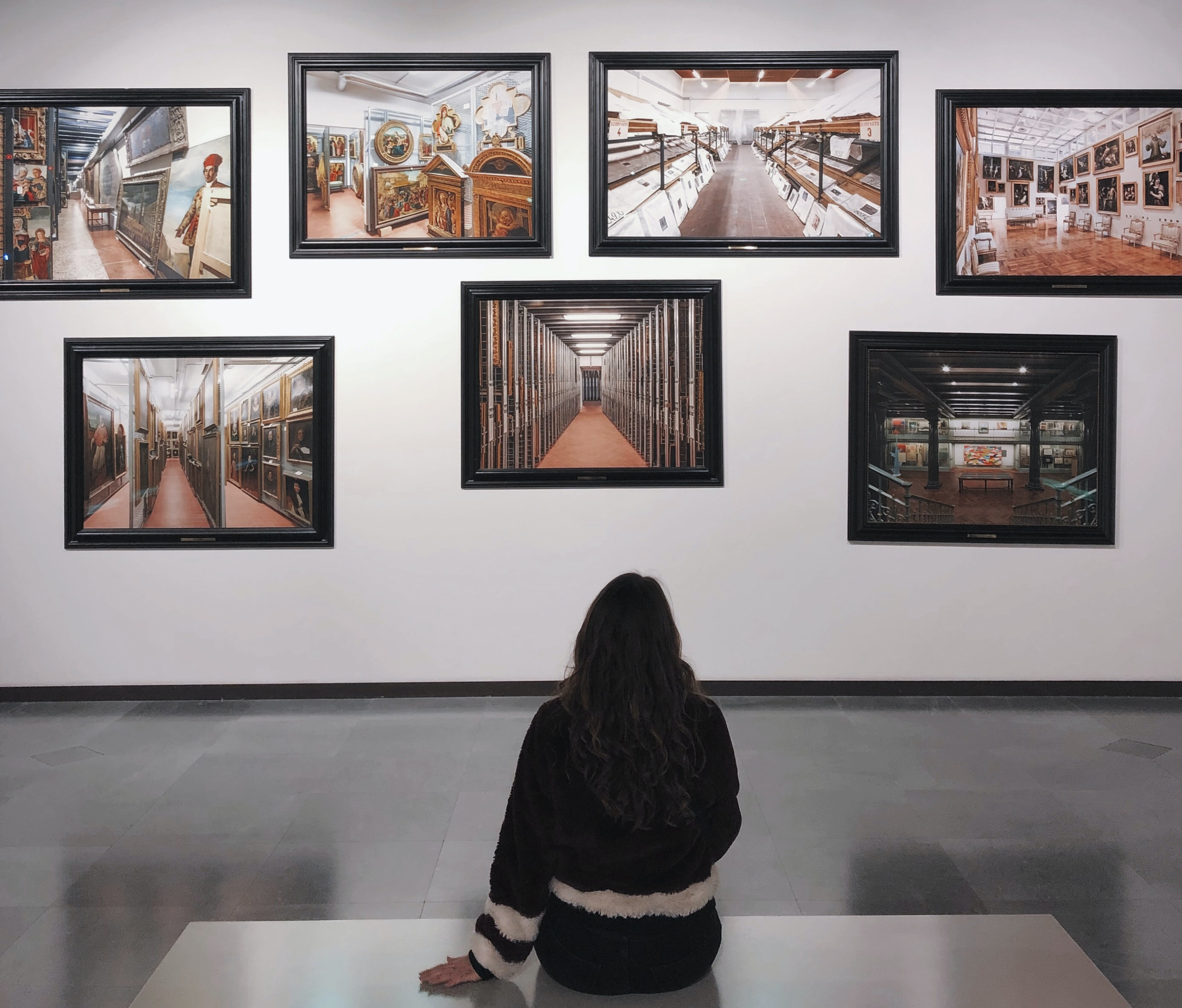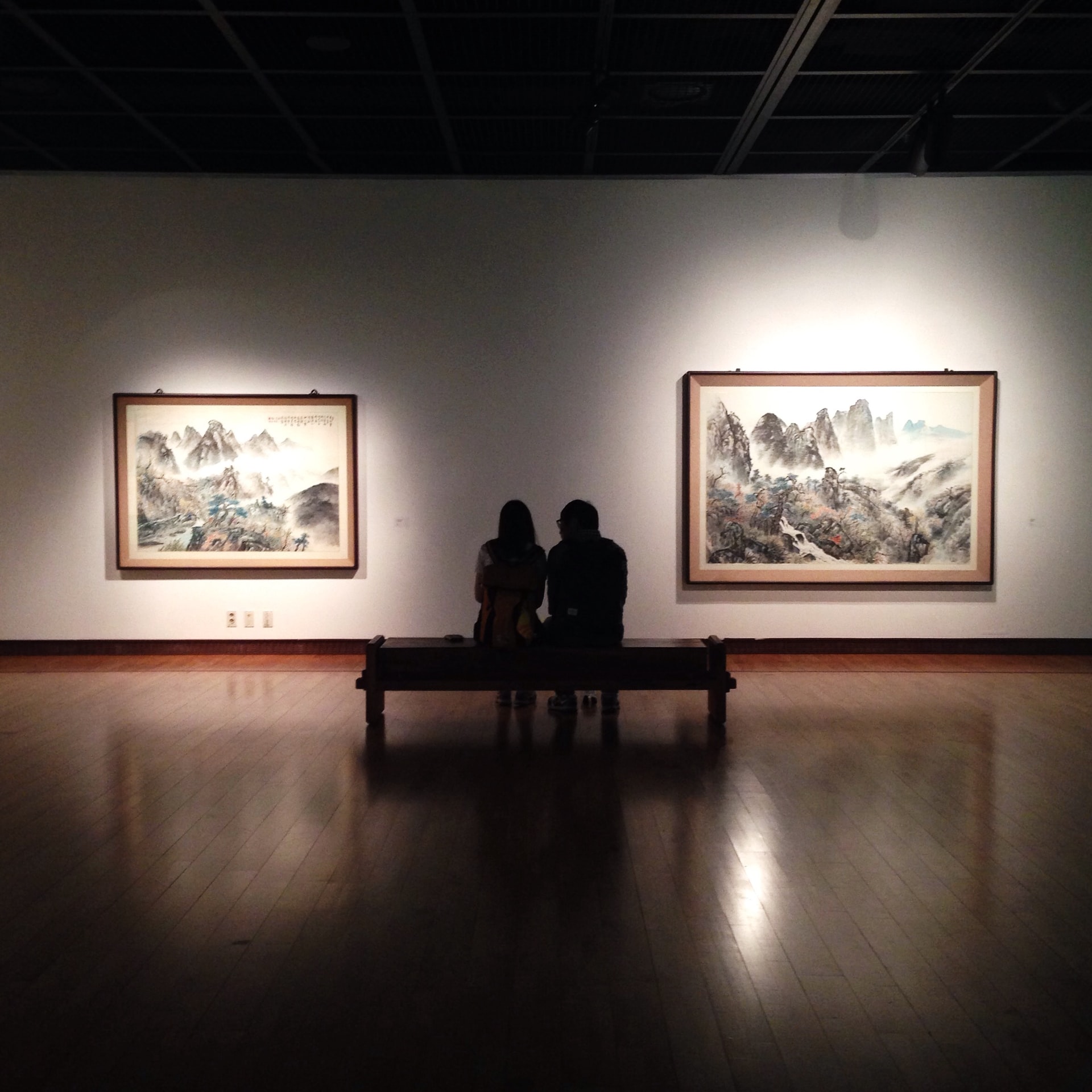Art shows and comic book conventions are starting up again - post-world apocalypse - this means we can meet again. Amateurs, buyers, collectors, investors, and aficionados; all making time during our weekends to take in some lectures and put in the energy to catch sight of what’s on the market. The prospect of chatting art for a few days fills me with delight. Honestly. But why is that? Why does it mean so much for artists and collectors to meet in person and chat about Art? What is either of us getting out of this exchange?
Art cannot be created in a vacuum
Throughout my artistic study and practice, which is a bit of a long time going now, a theme that comes up recurrently is that art cannot be created in a vacuum. The very essence of art is that it is created in time-space and belongs in a specific period and place in history and is, therefore, a reaction to the environment that generated it. The abstract painter Antoni Tapiès, Picasso’s protege, wrote about this in his book La Practicà del Arte. When an artist creates a piece, they’re wrestling with their personal world views and technical skill to lay down on canvas something that coherently communicates where they stand in regards to these circumstances. Once the piece is created, it needs to have its effectiveness tested against the real world. The purpose of the art show is to provide three key facets to the artwork’s existence; A space for introspection, a space for conversation, and a space for validation

A space for introspection
Picture this: The collector takes notice of something on a canvas, in a frame, and reacts. All the while the artist is nearby and watches their eyes glimmer with awe or contempt. Both of which are valid responses to the artwork and so is an entire array of sentiment. The feelings induced by an art piece are unique to each viewer. Regardless of the figurative aspects of the depiction, the subject will resonate differently based on one’s life experiences. This is why art can feel like it speaks to us and this is also the basis for introspection.
When seeing a piece in real life, its full impact is enriched by the space one has created for its viewing by showing up. Time has been dedicated to the piece and the viewer experiences it with an open mind, accepting to be challenged by what the artwork has to offer. The beholder is getting a lot more out of the experience by coming to view the piece in its authentic state, rather than glance at it from behind a computer screen or study a reproduction. By committing to being fully present they are giving themselves the time and space to look beyond the factual depictions and into the art's innermost meaning. You can stay with the piece, examining it, and evaluating how you feel about its implications for as long as you like. That is Art’s raison d’être; to help create introspection.
Furthermore, if the artist is present, they are witnessing this shift in emotion from the patrons. Without intruding on their privacy or mindreading in any way, the observation of any of the patron’s reactions informs the artist a great deal about the piece’s efficacy. The reaction in itself, regardless of the emotions it generates, means the piece was successful in one, if not more, of its objectives. The emotional reaction implies that the piece has a strong enough composition to catch one’s gaze, that the subject communicated clearly enough to hold onto the onlooker’s attention and that the subject itself meant something to the viewer. Now whether that something is what the artist felt when they created the work or is what they intended the viewer to feel is irrelevant. An Art piece’s reception and understanding intimately belong to the person taking it in.
So there you have it, attending a physical art show provides opportunities for aficionados to redeem the necessary space to take in the entire breadth of the artwork - including the prompt to introspection. Concurrently, the artist benefits from this interaction as they can evaluate the efficacy of the piece: does it catch and retain attention? Is it worth someone’s time? Was it worth their own time? It’s kind of a symbiotic thing going on there.

A space for conversation
Initially, the piece exists in two spaces. In a metaphorical sense, not quite a parallel universe. One space is its interaction with the viewer who experiences it, and the other is between it and the artist who created it. One of the benefits of coming to the art show is the possibility to give the piece a third realm of existence; one at the intersection of its creator’s and its recipient’s understanding of the artwork.
The aficionado can engage the creator and express their understanding of the piece. Most use this as a means to channel their emotions, opinions, or real-life experiences about the topic perceived in the artwork while maintaining a safe space between themselves and the context. The artwork creates that space for reflection by serving as the object of one’s observations onto which we project our experiences, rather than having the viewer being the one under scrutiny. By bringing the piece home, one can perpetuate the space for reflection if the topic is one they’d like to delve into deeper. Generally, an art piece only fascinates us as long as we need for it to be figured out. It can be any aspect of the artwork which needs to be understood. This aspect will be different for each viewer as it acts as a mirror to oneself.
Through this exchange, the artist gets to know how the piece resonates with its audience. This means understanding whether or not the subject was communicated clearly. Whether the piece strikes a chord or falls flat. The viewer communicates in different terms what they like and don't like about the artwork. A good artist can harness those impressions into a critical understanding of their shortcomings in regards to either technical representation or complexity of ideation. They can subsequently use this knowledge to improve their next pieces. This feedback is indispensable for the artist’s future works and growth.
The space for conversation, therefore, is just what it claims to be; a conversation between the artist and viewer. Engaging about the piece allows the viewer to tackle subjects that pique their curiosity but that they feel are off-limits due to social norms or personal values. The conversation is about the piece addressing these subjects, not about the viewer wanting to know more about themselves - which creates a safe space to ponder. The artist here again earns feedback. This time about the piece’s efficacy in terms of communication; Does the artwork provoke thought? Does the piece communicate a concept?
A space for validation
One of the more profound benefits of the meeting of the creator and the aficionado is the mutual validation of our experiences: Bonding, as we call it. The depth of this experience is underrated. Society considers bonding to be meaningful in workplaces and within family contexts because it anchors people who need to interact peacefully for extended periods of time in often tumultuous environments. So when you extend that environment to something as unbounded as the whole world, knowing that two individuals can bond over the topic of an artwork brings us a whole lot closer despite our cultural or belief differences.
When an art piece successfully tackles an important topic, such as a taboo, an outdated social norm, or controversial realities of everyday life it means the artwork looks good enough to communicate its topic to someone. This person, in turn, reciprocated their interest in the questions raised by the piece. Therefore the artist by creating the piece, and the viewer by showing interest in the piece, both validate each other’s belief that the topic is worth their attention, time, and concern. This type of validation is one of the main factors for individuals to instigate change in situations they perceive as unfit. As in psychology, when raising a child it is important to validate their experiences for them to learn to trust themselves and their experiences and consequently act upon them in a way that aligns with their objectives. This phenomenon does not go away as we age. We seek validation throughout our existence in order to affect the change that we want to see in our lives and our societies. The aforementioned safe space created by the artwork is key here again as it not only offers the space to contemplate meaningful taboos but also validates that you are, in fact, not alone concerned by these topics. The validation gives you an added boost to believe in, and act upon the change you want to see.
This reinforcement phenomenon goes both ways as the beholder learns to trust themselves in their experiences of the world, so does the artist in addressing these topics in their art, to begin with. The validation here is mutually beneficial. Having someone respond positively to the artwork entices the artist to push forward with their exploration of their own concerns and to evaluate just how much change in the world they can help affect. It reinforces their willingness to push themselves out of their comfort zones, to take risks, and to create content that is all the more authentic. By knowing that these subjects matter not only to themselves but to others also.
Again, that symbiotic thing is going on; A mutually beneficial relationship isn’t a one-way deal. The viewer wins some, the artist wins some. Both have increased faith in themselves from this exchange. It’s a subtle thing, but it’s very much a reality of the interaction and it’s why we keep coming back!
Will you be at the next show?
Art is a vehicle for personal growth and self-care. Introspection, mutual understanding, and open channels of conversations about hard topics are a bonus to the fact that you get to appreciate something beautiful that was inherently created for you to enjoy. The art show is a fantastic opportunity to initiate these conversations with the artist because it grants them a very real sense of why it's important to keep up making art and pushing out of their comfort zones. It’s also the reason for which the artist created the work; to share with you that these topics are important to them. I feel to a certain extent, not unlike the zen proverb, that the artwork does not fully exist if it is not seen - like a tree falling in the forest.
Meet me at the next art show!
To know the schedules for my next art shows check out my blog post Upcoming Shows.
Photo credits in order of appearance:
Diogo Fagundes on Unsplash
Klaudia Piaskows on Unsplash
Nevi Ayu E on Unsplash
